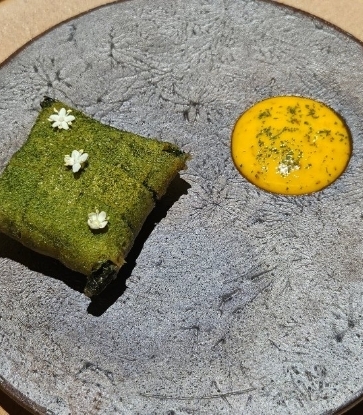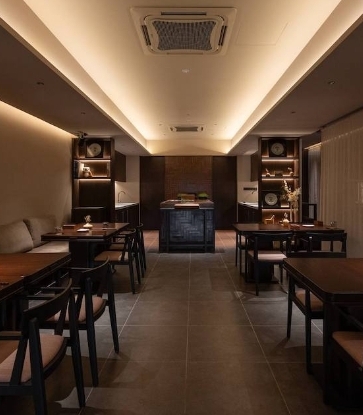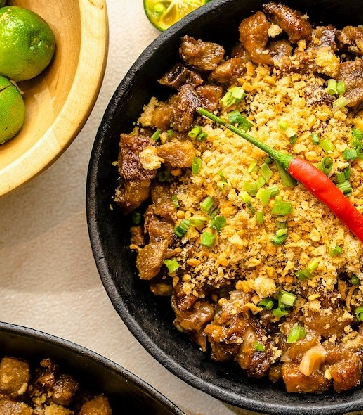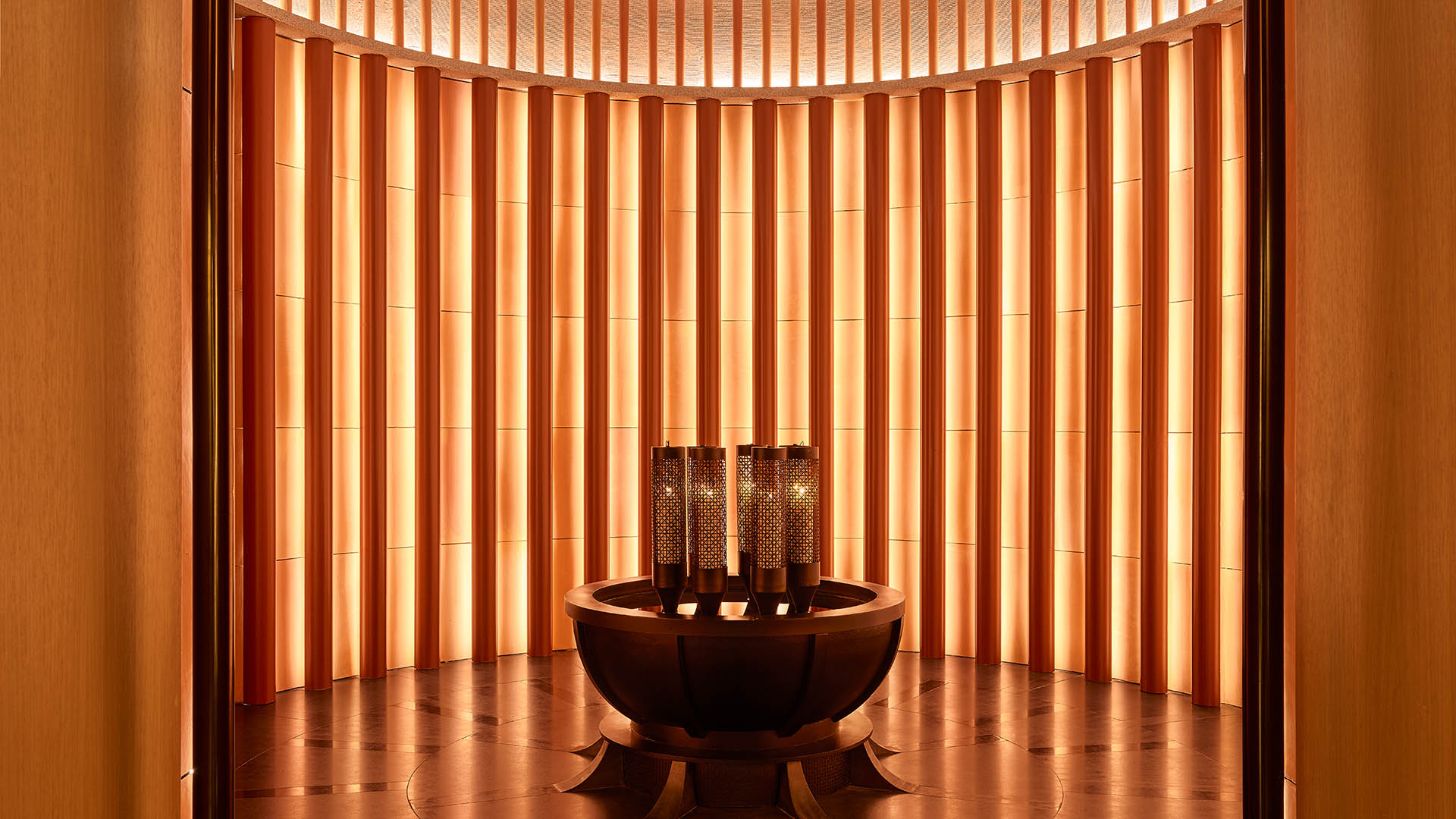“Life is good,” quips Lim Chong Jin aka Jin Kor (Hokkien for “Elder Brother Jin”), a gentle, easygoing. 67-year-old. He flashes a laconic smile as he tucks heartily into his breakfast — a bowl of soupy Penang Hokkien Mee. His jovial manner is infectious.
“But, it hasn’t always been this way,” he rues as his brows furrow. “We were very poor when I was a boy. My parents had four children, and I was the eldest. My father worked as a mechanic, and what he earned was barely enough to feed us all. So, I left school at twelve, to work and help earn money to support our family.”
Lim shares that he has always been an avid food lover from a very young age, so he chose to work in coffee shops to feed his passion, both figuratively and literally.
Since 1995, Jin, together with his wife, Ong Cheng Choo, 60, and son, Lim Eng Oon, 40, have been running Penang Road Famous Jin Kor Char Kuey Teow at Joo Hooi coffee shop. It is a new entrant to The MICHELIN Guide Kuala Lumpur & Penang 2024 Bib Gourmand selection.

Can you tell us when your char kuey teow business started?
We started selling char kuey teow in 1984, at the famous Kek Seng coffeeshop further up Penang Road. My mother ran the popular popiah stall there, and I was helping her before I started my own char kuey teow business.
Before that, I worked at different stalls at another coffee shop along Bishop Street: I was serving Hokkien mee, mee Jawa, yong tau fu — any place where I could earn money and enjoy the food at the same time.
From young, I loved Hokkien mee, sar hor fun, Assam laksa, and nasi lemak. But my personal favourite has always been char kuey teow.

Why and how did you decide to get into this business? Did you have to make any sacrifices, or face any obstacles when you first started off?
I was the hawker in the family in the beginning. My wife was stitching shoes at the time to make ends meet. We had very little money, and had to support two small boys.
But, we were always passionate about hawker food. I remembered one time, when we heard about the famous Assam laksa stall in Ayer Itam Market, it took us two hours to walk there from our house in Weld Quay (about 5 miles/8 km).
Char kuey teow is always very popular among local Penangites, so I was always looking for an opportunity to learn how to cook it.
How did you obtain the original/first recipe for your char kuey teow? Was there any master-apprentice training involved?
I got to know a char kuey teow man, Mr. Chang Ee, at the Bishop Street coffee shop. We became very good friends. One day, he said he would share his recipe with me — free-of-charge — because he felt sorry for me, having to support two sons on my meagre income as a hawker stall assistant.
I asked him what he needed from me. He said, “Only two things: bring a pen and a piece of paper. Otherwise, whatever I tell you will disappear like a passing wind.”
And that was when he told me everything about his char kuey teow — what went into the sauce: light soy sauce, dark soy sauce, rock sugar, a bit of Aji-no-moto seasoning, oyster sauce...but no water! If you add any water to the sauce, it will spoil everything.
Then, he taught me how to cook it: first, crush the pork lardons in the wok, then add the prawns, followed by the finely-chopped garlic and salted radish. Next, the kuey teow, lup cheong (sausage), the condiments and chili paste, beansprouts, chives, and cockles. Finally, crack an egg in.

Who did the cooking then, and now? Do you encounter any disagreements, and how do you resolve those?
My wife and I took turns to fry at the beginning. But, after twenty years, I developed a severe pain in my right (frying) arm, so she took over most of the cooking duties. My eldest son has been helping out since 2004. Now, they handle the frying duties, while I take orders and serve. My second son is an IT professional, so he’s not involved in this business.
What were the challenges you faced when you started, and along the way? Any challenges you face presently, and which you foresee for the future?
Trying to get the right balance of flavours was a challenge at the beginning. I continuously experimented with the condiments and the timing of my cooking, in order to get the right tastes and textures: not too dry, not too oily.
Pleasing customers is a constant challenge: some will complain that they had to wait for too long, some wanted their noodles softer... the list goes on and on. We always try our best to give the customers what they want.

Any secrets to your char kuey teow, what sets it apart from others, and do you scout around and compare your char kuey teow to others?
We make sure we know our competitors. For our own char kuey teow, we prefer to use narrower, thinner kuey teow noodles, so they can absorb the flavours from the condiments better. We also try to fry one plate at a time, although we do up to a maximum of three portions at a time during peak or busy times, in order to lessen the waiting time for our customers.

What does the MICHELIN Bib Gourmand recognition mean to you?
The MICHELIN Guide’s recognition of our humble stall means a lot to us. It has changed our lives. Now, we are busy almost round-the-clock. I am so very, very happy. Please tell whoever is in-charge over there, we thank you for making so many people become aware of us.
Any future plans for your business?
We intend to carry on as we had always been — the three of us doing our best and working together as a family unit.
Penang Road Famous Jin Kor Char Kuey Teow is located at Joo Hooi Cafe, 475 Jalan Penang, George Town, 10000, Malaysia.
All photos are by Peter Yeoh.



















